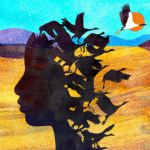Child exploitation is an alarming social crisis, one that tragically impacts thousands of children worldwide. At the heart of this issue lies the sinister practice of grooming, a process manipulators use to exploit the innocence and trust of children. Understanding the relationship between grooming and child exploitation is essential to prevent harm and provide effective protection for vulnerable youth.
Defining Grooming
Grooming is a calculated, manipulative process through which perpetrators establish trust with children, aiming to exploit them sexually, emotionally, or physically. Predators often invest substantial time and effort into this process, progressively breaking down a child’s defenses and isolation barriers, ultimately leaving the victim powerless.
Stages of Grooming
Understanding grooming involves recognizing its stages:
- Targeting and Building Trust: The predator identifies a vulnerable child, often isolated or emotionally needy. Initial contact involves friendship, support, and attention, creating a facade of care and trustworthiness.
- Isolation and Dependence: Once trust is established, the predator methodically isolates the child from friends, family, and other sources of support, increasing the child’s dependence on them. This often involves emotionally manipulating the child to believe no one else understands or cares for them as much as the abuser does.
- Normalization of Inappropriate Behavior: Gradually, the abuser introduces sexual or inappropriate behavior, disguising it as normal affection or curiosity. By slowly pushing boundaries, the predator ensures the victim becomes confused and desensitized, reducing resistance to further exploitation.
- Exploitation and Control: Eventually, grooming culminates in explicit exploitation, including sexual abuse or trafficking. The predator uses emotional manipulation, threats, blackmail, or shame to maintain control, ensuring the child remains silent.
Grooming and Online Exploitation
The internet and social media have significantly amplified the threat of grooming. Predators easily disguise themselves, create false identities, and exploit anonymity to gain access to children. Online grooming can take place over weeks or months, as predators steadily build trust through messaging, gaming platforms, or social networks. Digital platforms often make detection challenging since perpetrators can conceal their activities more effectively.
Psychological Impact of Grooming
Children subjected to grooming face profound psychological trauma. They often grapple with feelings of confusion, guilt, shame, betrayal, anxiety, and depression. Victims may suffer lasting impacts on their mental health, struggling to form trusting relationships or establish self-worth.
In extreme cases, grooming leads to self-destructive behaviors, such as substance abuse, self-harm, or suicidal ideation. It’s critical that victims receive appropriate, trauma-informed psychological support to address these effects comprehensively.
Societal Factors and Vulnerabilities
Certain societal conditions or individual vulnerabilities make children particularly susceptible to grooming:
- Family Dysfunction: Children lacking stable family relationships often seek affection and validation from outside sources, making them prime targets.
- Social Isolation: Those without strong friendships or social connections are vulnerable to manipulators offering companionship.
- Economic Hardship: Predators often exploit economic vulnerabilities by offering financial assistance or gifts, creating dependencies.
- Prior Trauma: Children with previous experiences of abuse or neglect are particularly susceptible to further manipulation and exploitation.
Legal and Preventative Measures
Addressing grooming effectively requires coordinated action from law enforcement, educators, parents, and policymakers. Legal frameworks must clearly define grooming behaviors, enabling effective prosecution. Moreover, preventative measures should include:
- Education and Awareness: Schools, community groups, and families should educate children on identifying grooming behaviors and reporting suspicious interactions.
- Internet Safety Programs: Comprehensive online safety initiatives help children understand risks and develop safe habits online, such as avoiding sharing personal information and recognizing predatory behavior.
- Support Systems: Strengthening support networks in schools and communities ensures children have trusted adults to approach with concerns or disclosures.
Role of Parents and Educators
Parents and educators play a pivotal role in preventing grooming:
- Open Communication: Encouraging open dialogue about relationships, boundaries, and online activities helps children feel comfortable discussing uncomfortable interactions.
- Monitoring: Keeping aware of a child’s online and offline interactions and friendships can help detect early signs of grooming.
- Reporting Concerns: Swiftly reporting suspicious behavior to authorities can prevent further harm.
Case Studies and Examples
Prominent cases have shed light on grooming patterns. High-profile situations, such as those involving coaches, teachers, or online predators, underscore the urgent need for vigilance. Examining these cases highlights common grooming tactics, such as:
- Building trust through positions of authority or mentorship.
- Gradually introducing boundary-crossing behaviors.
- Utilizing secrecy and emotional manipulation to control victims.
These examples emphasize the importance of institutional accountability and stringent safeguarding policies.
Community and Institutional Responsibility
Communities and institutions have an obligation to create environments where grooming cannot thrive. Clear safeguarding policies, thorough background checks, and consistent training for adults working with children significantly reduce risks.
Schools, clubs, religious institutions, and sports organizations should regularly review their protocols, emphasizing a zero-tolerance stance on grooming behaviors. Establishing clear reporting channels and encouraging a culture of vigilance further strengthens protective measures.
Conclusion
Understanding grooming’s relationship to child exploitation is crucial for protecting our children. Grooming is insidious, exploiting vulnerabilities and systematically dismantling defenses. Through comprehensive education, robust safeguarding measures, legal frameworks, and supportive environments, society can combat this threat effectively.
Everyone, from parents and educators to community leaders and policymakers, plays a vital role in recognizing and addressing grooming. Protecting children from exploitation demands awareness, vigilance, and an unwavering commitment to their safety and well-being.





